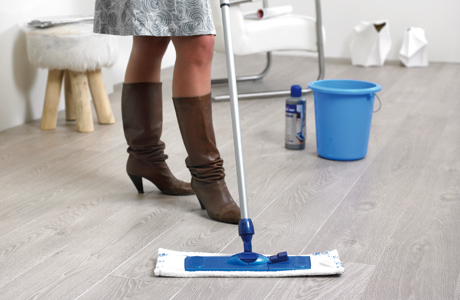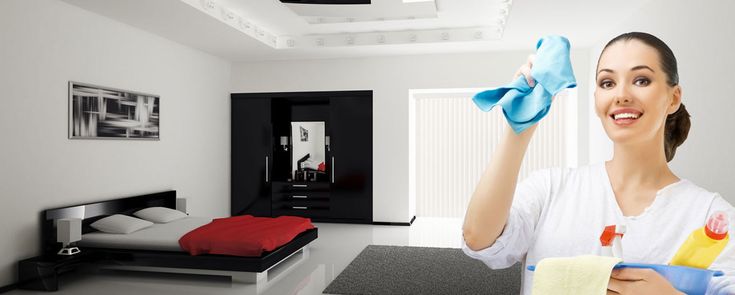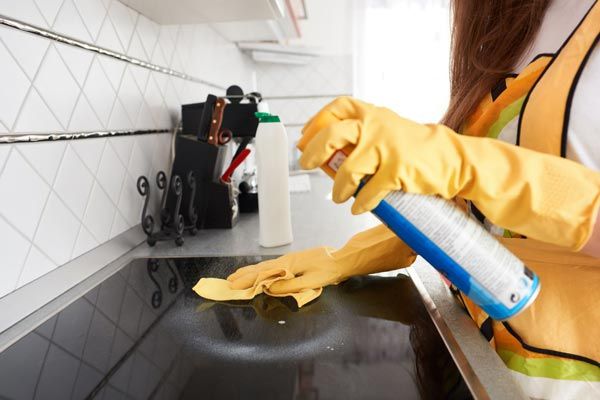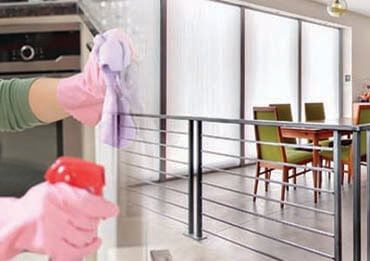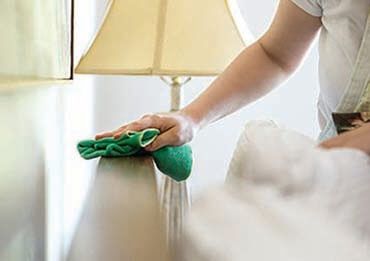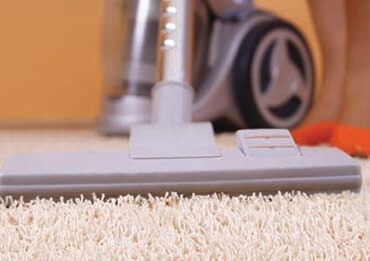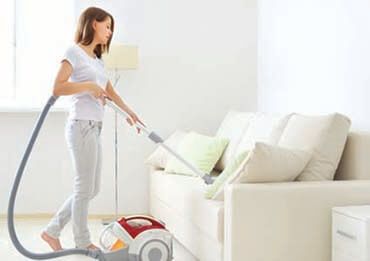Moving out of a rental property comes with a lengthy checklist of things to manage, and at the top of that list is end-of-lease cleaning. Why is it so crucial? End-of-lease cleaning not only helps secure your bond back but also ensures that you leave the property in a pristine condition, similar to when you moved in.
It’s a critical step for tenants to meet specific cleanliness standards before handing over the keys to the landlord or property manager. Let’s dive into why an End of Lease Cleaning Melbourne checklist is essential for a successful move-out, ensuring you’re equipped with knowledge and tips for efficient cleaning that helps safeguard your deposit.
What Does End-of-Lease Cleaning Mean?
End-of-lease cleaning refers to the thorough cleaning process required when a tenant moves out of a rented property. Tenants are mandated to restore the property to the same state of cleanliness as it was when they first moved in. This deep cleaning is crucial, not only for the aesthetic appeal but also for the hygiene and maintenance of the property.
Since the return of the security bond—the amount paid at the beginning of the tenancy as a safeguard against damages—is contingent upon the condition of the property, end-of-lease cleaning becomes essential. It encompasses detailed cleaning tasks, including washing walls, cleaning out cabinets, and ensuring that every nook and cranny of the property is spotlessly clean.
Is End-of-Lease Cleaning a Legal Obligation?
Yes, end-of-lease cleaning is a legal obligation outlined under the Residential Tenancies Act. The act requires that the rented property be left in a clean, sanitised, and habitable condition by the end of the tenancy. Failure to do so allows the property owner or manager to use the bond money to bring the property back to its original state.
In some cases, if the property is left in a considerably damaged or uninhabitable state, property managers have the right to pursue legal action against the tenant. This ensures that the property is suitable for future tenants and underscores the importance of adhering to the prescribed cleanliness standards as stipulated in rental agreements. Performing this type ofcleaning isn’t just about following laws; it’s also about upholding the responsibility of a tenant to leave the property in good condition for the next occupant.
Standard Cleaning vs. End of Lease Cleaning
When you’re planning to move out, understanding the difference between standard cleaning and end of lease cleaning is crucial. Standard cleaning is something most of us do regularly—it includes tasks like dusting, vacuuming, and wiping down surfaces to keep our living space presentable. However, when your lease ends, a more thorough approach is needed. This is where end of lease cleaning comes into play.
End of lease cleaning is an intensive process that goes beyond regular tidying up. It involves deep cleaning every nook and cranny of the rental property to ensure it’s in the best possible condition for the next tenant. This type of cleaning covers areas often overlooked during daily or weekly cleaning routines, such as inside cabinets, behind appliances, and under sinks. Moreover, this detailed cleaning is not just for aesthetics—it’s often a requirement stated in rental agreements to help tenants secure their full security deposit return.
To give you a clearer idea, here’s what typically distinguishes end of lease cleaning from standard cleaning:
– Depth of Cleaning: End of lease cleaning covers more ground, ensuring even the hidden spots are clean.
– Areas Covered: Includes interiors and exteriors, appliances, and often gardens and garages.
– Purpose: Aim to restore the property to its original state as noted in the lease agreement.
By going the extra mile, this deep cleaning helps ensure that the property is impeccable, which is often necessary to meet the terms of your lease agreement.
It helps secure the rental bond
One of the primary reasons end of lease cleaning is so important is its role in securing the return of your rental bond. At the beginning of a tenancy, tenants typically provide a security deposit (often equivalent to a month’s rent) which is held until the end of the lease. To get this full amount back, tenants must return the property in the same condition they received it, barring normal wear and tear.
Performing a thorough end-of-lease cleanup is crucial because property managers will closely inspect the condition of the premises. Any damages or unclean areas can lead to deductions from the security deposit to cover repair and cleaning costs. In many cases, disputes over the return of the bond are related to the cleanliness of the property at the end of the tenancy.
Here are a few key areas where end of lease cleaning can impact your bond:
– Kitchen and bathroom deep clean: These areas are scrutinised due to their frequent use and potential for grime build-up.
– Wall and floor cleaning: Removing stains and marks can prevent claims against the deposit.
– Outdoor areas: Maintaining gardens, pool areas, and patios is often required in the lease terms.
Because of the stringent standards often required to secure the return of the bond, many tenants choose to hire professional cleaners who specialise in end of lease cleaning to ensure that no area is overlooked and their bond is fully returned.
Cost of End of Lease Clean Process
End of lease cleaning costs can vary significantly based on several factors. The type and size of the property play critical roles in defining the overall expense. For instance, a studio apartment might cost less to clean compared to a three-bedroom house due to the difference in space and cleaning requirements. Furthermore, costs are influenced by the level of detail required and the specific services needed, such as steam cleaning upholstery or handling pest control.
The composition of the cleaning team and their tasks dictate the financials to an extent. For example, specialised services like cleaning high-performance air condition systems or comprehensive pest treatments can increase the quote. When assessing the cost, it is beneficial to consider a bundled service package, particularly if the property requires extensive cleaning, as this can often offer value and efficiency over booking separate services.
End of Lease Cleaning Checklist
To ensure a thorough clean-up of a rented property, it’s crucial to have a detailed cleaning checklist. This list serves as a guide to cover all bases—from interior nooks to exterior corners—ensuring nothing is overlooked. Here’s a breakdown to organise your cleaning:
Exterior Cleaning Tips
– Sweep and remove debris from patios, verandas, and driveways.
– Wipe down outdoor furniture, fences, and window sills to eliminate dust and cobwebs.
– Manage lawn care by trimming edges and removing weeds.
– Clean pools by skimming out leaves and treating the water.
– Condition outdoor light fixtures and ensure they are functional.
– Tackle stains on garage floors and ensure all bins are emptied and cleaned.
Interior Cleaning Tips
– Empty and wipe down all storage spaces, such as cupboards and drawers.
– Ensure all appliances and surfaces are dust-free and sanitised, including air conditioners and vents.
– Carefully clean light fixtures, switches, and doorknobs.
– Wash walls, baseboards, and floors, paying extra attention to removing any stains or scuffs.
– Professionally clean carpets and upholstery if necessary.
Kitchen Cleaning Tips
– Deep clean all cooking appliances, ensuring ovens, stovetops, and grills are grease-free.
– Sanitise sinks, taps, and countertops to prevent clogging and maintain hygiene.
– Clean refrigerators and freezers thoroughly after emptying them.
Bathroom & Laundry Cleaning Tips
– Disinfect floors, toilets, showers, and sinks to maintain a sanitary environment.
– Address soap scum and mould on shower doors and walls using specialised cleaning agents.
– Check and clean bathroom fixtures to ensure they are in good working condition.
Walls & Floors Cleaning Tips
– Spot clean marks and dirt from all surfaces using gentle yet effective cleaning solutions.
– Maintain wooden floors by polishing and buffing to avoid damage.
This comprehensive checklist not only helps in achieving the best cleaning results but also supports tenants in securing their full security deposit refund, underscoring the importance of a meticulous approach to end of lease cleaning.
Exterior Cleaning Tips
When moving out, paying attention to the End of Lease Cleaning South Melbourne in exterior areas of your rental property is just as crucial as the interior. Here’s a practical guide to ensure your outdoor space is in its best condition, helping you secure your full security deposit:
– Clear Debris: Thoroughly clean the veranda, patio, and lawn areas by removing any plant debris, scraps, and litter that might have accumulated.
– Outdoor Furniture: Dust off and clean any outdoor furniture and wipe down window sills to get rid of cobwebs and dirt.
– Lawn Care: Take the time to trim edges, mow the grass, and pull out weeds to make the lawn neat and tidy.
– Waste Removal: Dispose of pet litter properly and remove any other wasteful materials from your outdoor area.
– Pool Cleaning: If there’s a swimming pool, ensure the surface is free from leaves and other floating debris.
– Driveway and Garage: Sweep the driveway, clear out the compost bin, and remove oil stains and dirt from garage floors.
– Outdoor Lighting: Check and clean all outdoor lighting fixtures to make sure they are functioning and free from dirt.
Each of these steps not only helps maintain the aesthetics of the property but also reinforces the tenant’s responsible image, which can be beneficial for future rental endeavours.
Interior Cleaning Tips
A thorough interior cleaning is key to ensuring you leave the rental property in the best possible condition. Here’s a detailed cleaning checklist that covers major areas inside the house:
– Storage Areas: Clean inside and out of all cupboards, wardrobes, and drawers; ensure they are empty and free from dust.
– Fixtures and Fittings: Check all light switches and electrical fixtures to ensure everything is in working order. Clean skirting boards, window ledges, and picture rails.
– Windows and Doors: Wipe down window sills, fly screens, and glass sliding doors. Ensure that all door knobs and window tracks are cleaned and functional.
– Ceiling and Air Vents: Dust off ceiling fan blades and light fixtures. Clean air conditioners by removing dust from vents and washing out filters.
– Soft Furnishings: Wash or dry clean all curtains, remove all cobwebs from corners, and clean any fabric surfaces.
– Floors: Vacuum and mop all floors, paying special attention to corners and under the furniture.
– Odour Removal: If there are any traces of nicotine or other odours, ensure these are thoroughly eradicated from the property.
Including detailed tasks such as cleaning behind appliances and ensuring all tenant-added fixtures (like shelving) are removed and walls repaired, this checklist aims to refurbish the unit to a state that is as good as, if not better than, when the tenant first moved in. This not only aids in a smoother transition for incoming tenants but also ensures that you, as the outgoing tenant, leave on good terms with your landlord and secure your deposit.
Kitchen Cleaning Tips
When it’s time to tackle the kitchen during your end of lease cleaning, a methodical approach will help ensure no corner is overlooked. Start with the appliances, where odours and grease can linger. The oven requires meticulous attention; use a dedicated oven cleaner for the interior, and don’t forget to scrub the grilling racks and trays. The stovetop, often a hotspot for spilled foods and grime, needs a robust degreasing agent.
For daily maintenance reduced to weekly deep cleans, remember to address the less obvious spots, such as the interiors of the microwave and dishwasher. Pay extra attention to removing food debris from all nooks and crannies, which could harbour bacteria and pests. Counters should be cleared of appliances and personal items to wipe them down fully, using an antibacterial solution if possible.
– Wipe down all surfaces, including countertops and cabinet faces, with a suitable cleanser.
– Ensure that plug holes and taps are clear of debris to prevent blockages.
– Finally, clean out the refrigerator and freezer after they’ve been defrosted and emptied, leaving them fresh and odour-free.
Getting every kitchen detail clean not only contributes to the full return of your security deposit but also leaves the next tenant with a welcoming kitchen space.
Bathroom & Laundry Cleaning Tips
The bathroom, much like the kitchen, requires rigorous cleaning due to its frequent use and the nature of its soiling. Begin with the shower area, removing all traces of soap scum and mildew from the tiles and glass surfaces.
A paste made from baking soda and vinegar can be an effective natural cleaning solution for these areas. Don’t forget to soak showerheads in vinegar overnight to dissolve any lime scale build up, ensuring a sparkling finish.
Toilets and basins must be sanitised thoroughly, with special attention to the toilet seat and handle, as well as high-touch areas that can harbour germs. Replace any worn toilet brushes or cleaning cloths to prevent the spread of bacteria. For mirrors and other fixtures, use a damp cloth with a gentle detergent to avoid streaks.
Here are a few more tips for ensuring a thorough cleanse:
– Tackle any mould with a bleach solution or specialised mould remover, particularly focusing on grout and ceiling corners.
– Wash and dry any removable fabrics, such as shower curtains and bath mats.
– In the laundry area, ensure that the inside of the washing machine is free from soap residue and lint build-up.
By adhering to these detailed cleaning practices, you’ll not only maintain the hygienic appeal of the bathroom and laundry areas but also boost your chances of reclaiming your full deposit.
Walls & Floors Cleaning Tips
When it comes to end of lease cleaning, walls and floors require special attention as they are prone to visible wear and tear. Here are some practical tips to ensure these surfaces are spotless and can help secure your deposit:
- Identify Marks: Start by inspecting walls and floors closely to spot any scuff marks, stains, or oil marks. These are common in high-traffic areas and can often be overlooked.
- Gentle Cleaning Solutions: Mix a warm solution of sugar soap to effectively clean walls without damaging the paint. This solution helps in lifting tough stains and scuff marks without the need for harsh chemicals.
- Specific Treatments for Floors: Vacuum all floors thoroughly before washing them. For carpeted areas, consider steam cleaning to remove deep-seated dirt and restore the original texture of the carpets.
- Behind Appliances: Don’t forget to clean areas behind appliances and furniture, as these spots are often neglected during regular cleaning but will be checked during the final inspection.
Following these tips can greatly enhance the appearance of your rental property’s walls and floors, making a good impression during your final move-out inspection.
How long does bond cleaning take for a final clean?
The duration of an end of lease cleaning varies significantly based on several factors. Here’s what you need to know about the timing:
- Size of the Property: The bigger the property, the longer it will take. For example, a small studio may only require 3-4 hours, whereas a large family home might need 6-8 hours of cleaning.
- Extent of Cleaning Required: The condition of the property plays a crucial role. A well-maintained apartment will require less time compared to a property that has been neglected and needs intensive cleaning.
- Additional Services: Services like upholstery cleaning, window cleaning, and high-grade carpet cleaning add to the total time. Each additional service can extend the cleaning process by an hour or more.
- Number of Cleaners: The number of professionals working on the property also affects the timing. More cleaners can significantly speed up the process, whereas fewer hands might stretch the duration.
Understanding these factors can help tenants plan their move-out schedule more effectively, ensuring that there is ample time for a thorough clean that aids in securing the return of their bond.
Reinforce End of Lease Cleaning Standards
When it comes time to move out of a rental property, ensuring you leave the place in top condition is not only a matter of personal pride but also a legal obligation. This is where the importance of an end of lease cleaning checklist comes into play.
By adhering to a comprehensive cleaning regimen, you can ensure that the property is in the same (or better) condition as when you moved in, which is essential for getting your security bond back.
Legal Obligations and the Implications for Tenants
Under the Residential Tenancies Act, it is mandated that a property must be thoroughly cleaned and sanitised at the end of a lease. Failure to meet these standards can result in the property manager using the bond money to cover cleaning and repairs, which is why an end of lease cleaning is far more rigorous than standard cleaning routines.
Unlike regular cleaning, which might involve basic dusting and vacuuming, end of lease cleaning requires deep cleaning efforts such as washing walls, cleaning out appliances, and ensuring that every nook and cranny is addressed.
Difference Between Standard Cleaning and End of Lease Cleaning
Understanding the difference between standard cleaning and end of lease cleaning is crucial. Standard cleaning is something most of us do regularly—it keeps our living spaces reasonably tidy and hygienic day-to-day. However, end of lease cleaning is about restoring the property to its original state.
This intensive cleaning includes tasks such as scrubbing bathroom tiles, deep cleaning carpets, and making sure that fixtures and fittings are in excellent working order. Performing such tasks not only helps in maintaining the aesthetics of the property but also plays a critical role in health and sanitation, particularly in areas like the kitchen and bathroom.
Preparing for the Final Inspection
As the end of your lease approaches, preparing for the final inspection becomes crucial. This typically involves a thorough walkthrough by the property manager or landlord to ensure everything is in order.
A well-maintained end of lease cleaning checklist is invaluable here, providing a roadmap of what needs to be cleaned and inspected. It ensures that both tenants and landlords are on the same page regarding the condition of the property at the time of moving out.
Final Words
Understanding the importance of an end of lease cleaning checklist can significantly ease your moving-out process. It’s not just about cleaning; it’s about maintaining the standards required under your lease agreement and ensuring you secure your security deposit. A well-followed End of Lease Cleaning Abbotsford checklist ensures that every corner of the property is attended to, leaving no room for disputes over the cleanliness of the property at the end of your tenancy.
When it comes to end-of-lease cleaning, thoroughness is key. Employing a detailed cleaning checklist ensures that every nook and cranny is thoroughly cleaned, leaving the property spotless and ready for the next tenant. At OZ Vacate Cleaning, we understand the importance of a comprehensive cleaning to ensure you get your bond back hassle-free. Our professional cleaners follow a detailed checklist to ensure nothing is overlooked, giving you peace of mind throughout the moving process. Get in touch with us today and let our professional cleaners take care of everything.

